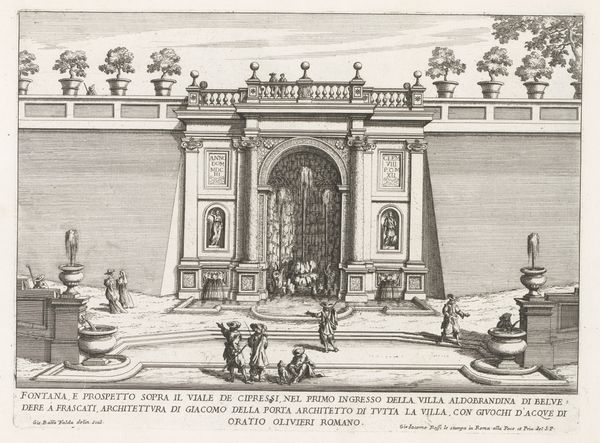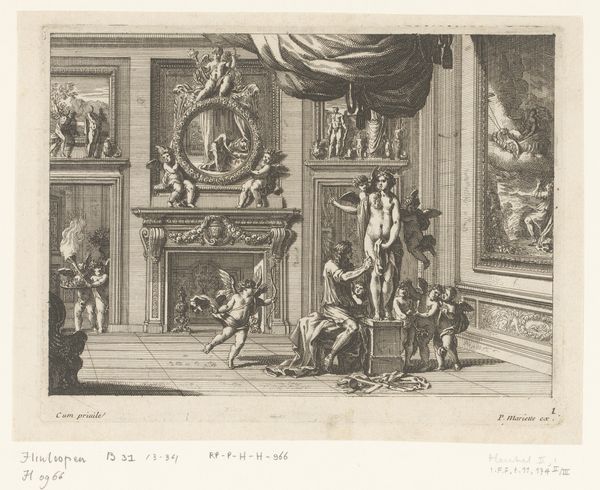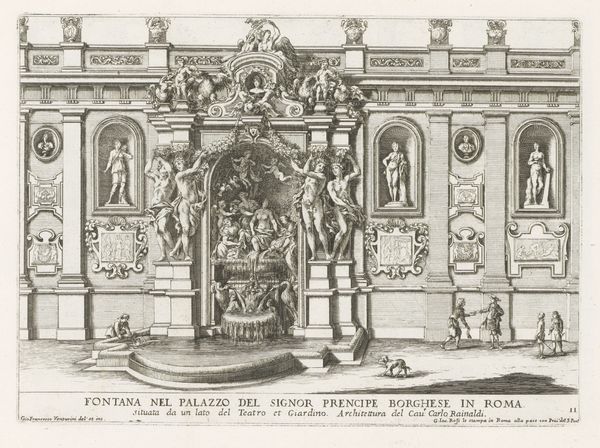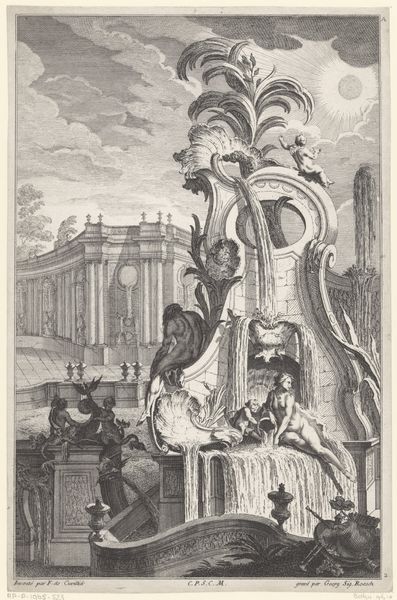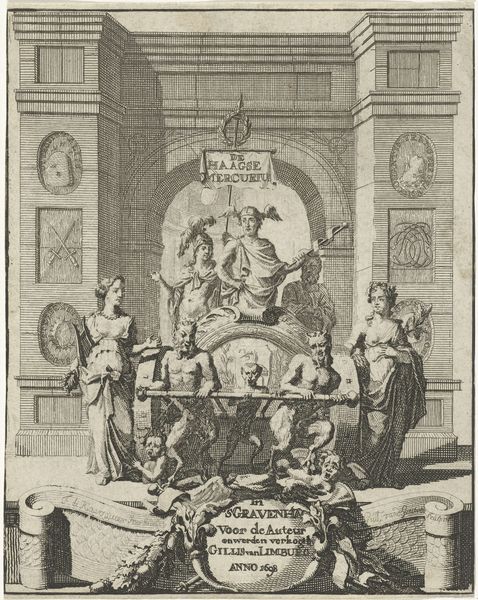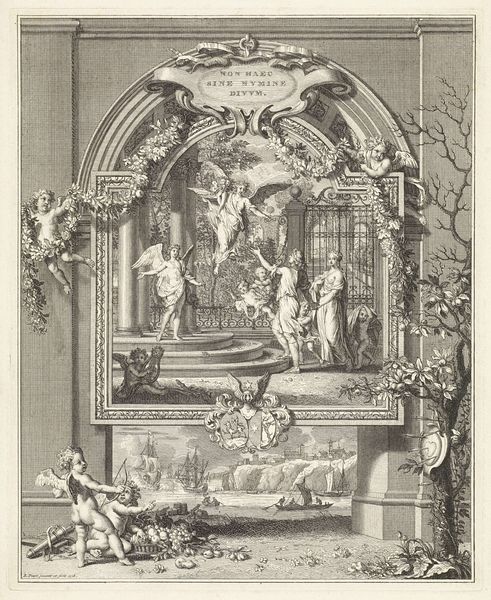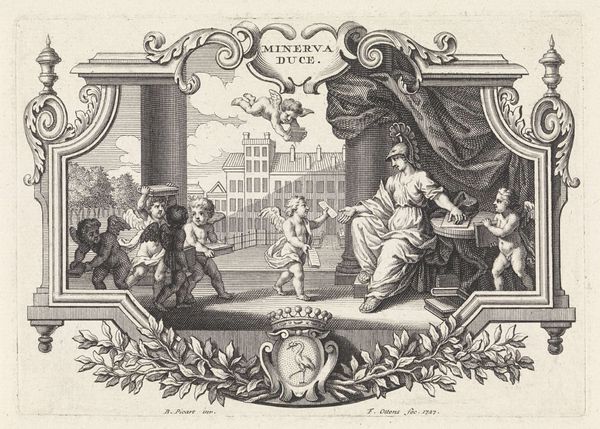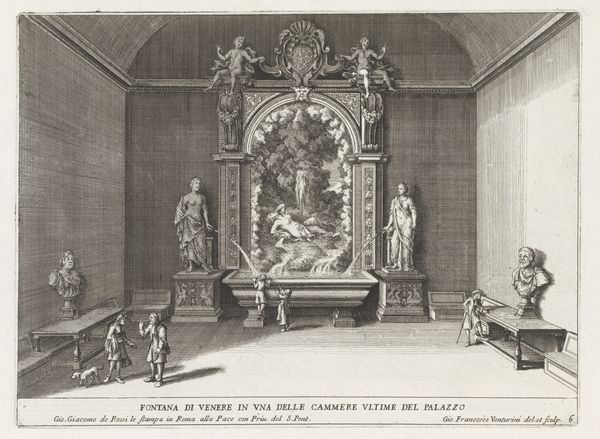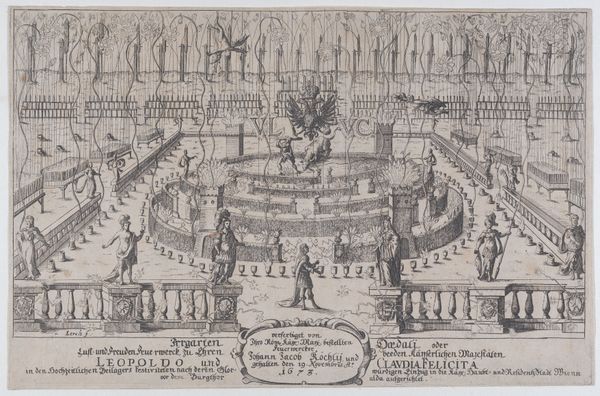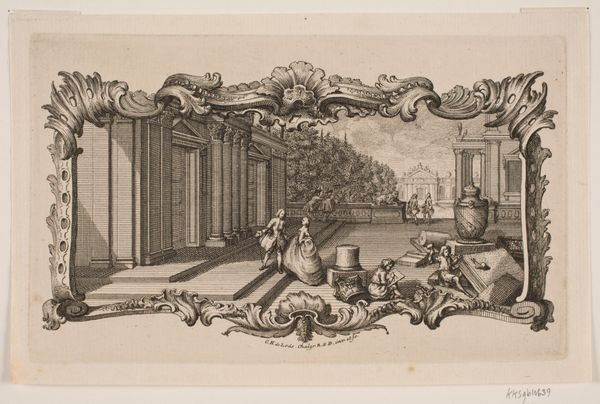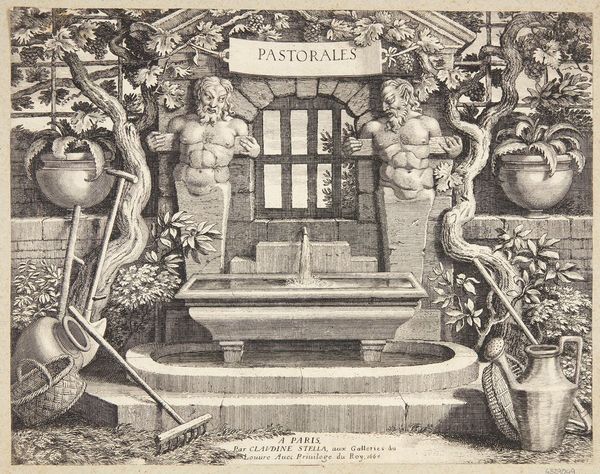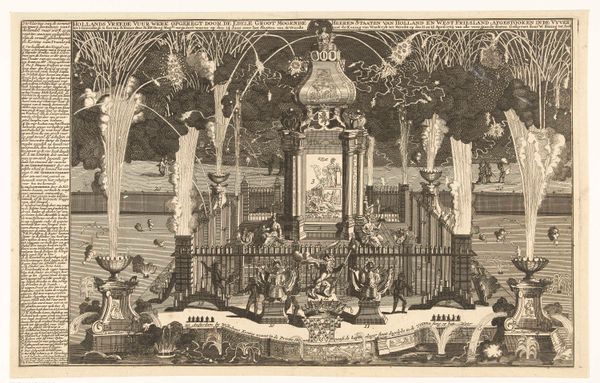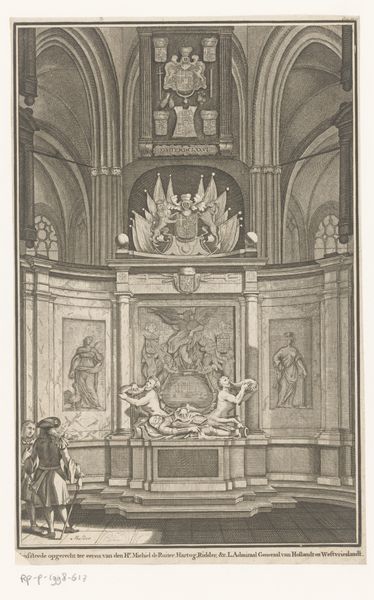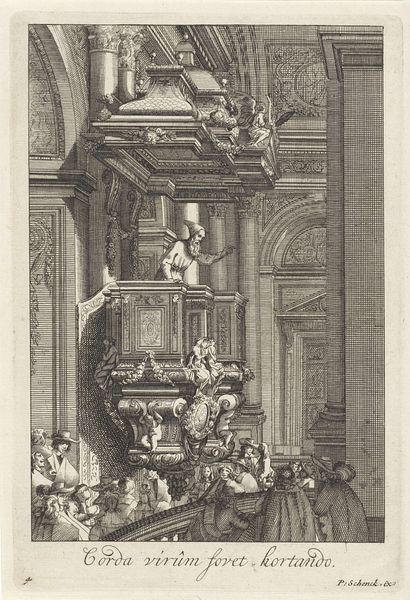
Fontein in een binnenplaats van het Palazzo Doria Pamphilj te Rome 1653 - 1691
0:00
0:00
print, engraving, architecture
#
baroque
# print
#
line
#
cityscape
#
history-painting
#
engraving
#
architecture
Dimensions: height 210 mm, width 289 mm
Copyright: Rijks Museum: Open Domain
This etching of a fountain in the Palazzo Doria Pamphilj in Rome was made by Giovanni Francesco Venturini around 1700. It’s rendered entirely in lines incised into a copper plate, then printed. Think about that process. Unlike painting or sculpture, etching is inherently reproductive. It’s about disseminating an image far and wide. And in this case, it’s an image of luxury: a grand courtyard with a fountain designed by Alessandro Algardi. The subject is rendered with great attention to detail. Venturini's skill in translating the three-dimensional fountain into a two-dimensional print, and the implied labor required, is further emphasized by the contrast between the stillness of the scene and the implied motion of the fountain water. The print is not just an artwork in itself, but it is also a document, one that speaks to power and taste in early modern Rome. The etching process underscores the connection between artistic representation, commodification, and the social display of wealth. It invites us to consider the labor, materials, and context in understanding the full meaning of the artwork.
Comments
No comments
Be the first to comment and join the conversation on the ultimate creative platform.
